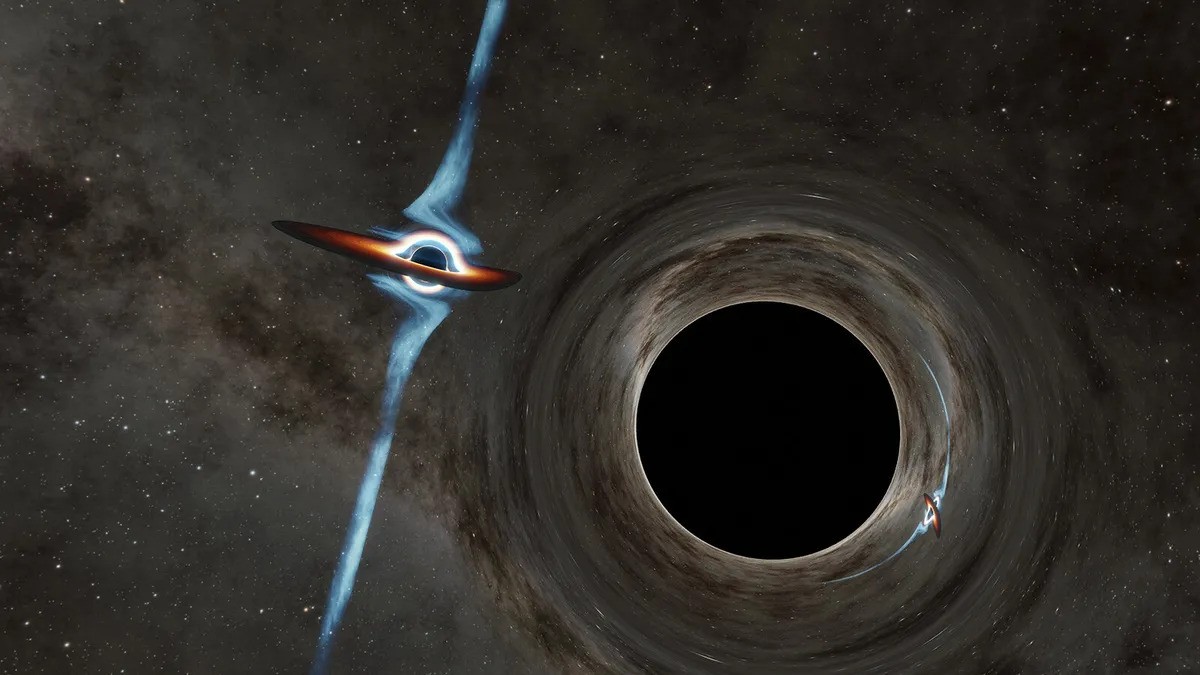Scientists have discovered that a supermassive black hole located in a galaxy 800 million light-years away from us has a companion. This is another black hole that orbits the first one with a period of 8.5 days.

Black hole and its companion
Researchers from the Massachusetts Institute of Technology in the USA, as well as Italy and the Czech Republic have made an amazing discovery, which is reported in the journal Science Advances. They observed the black hole about 800 million light-years away from us in the center of the galaxy, when they found something really unusual.
It turns out that there is another black hole in the gas-dust disk surrounding this monster. Given that the presence of supermassive objects in the center of galaxies has long been confirmed and they must somehow grow, scientists have long suspected that they should absorb similar smaller objects.
In this case, the smaller black hole makes one orbit around the larger one in 8.5 Earth days and they won’t merge for a long time. However, the discovery made allows studying a lot of interesting things about the processes in the centers of galaxies.
How scientists discovered the second black hole
The story of how scientists discovered the second black hole in this galaxy is interesting in itself. It all started back in 2020. Then the ASAS-SN system, consisting of 20 robotic telescopes located in the northern and southern hemispheres, reported that this star system dramatically increased its brightness by 1000 times.
Then they decided to explore it using the NICER X-ray telescope located on the International Space Station. It was observing this galaxy, which continued to show increased activity for 4 months. It was clear that this was a large-scale explosion near its center.
Analyzing the data, the scientists noticed that there were dips in the graph of the galaxy’s activity. They were repeated every 8.5 days. It is very similar to how planets eclipse their stars, passing between them and the observer.
Everything can be explained if we assume that a smaller black star orbits around a larger one. It periodically crosses the gas-dust disk and causes its disturbance. Huge clouds of gas and dust rise in all directions. And with a good location, they can completely block the radiation from the substance that the space monster absorbs.
Tidal Disruption Event
The only thing that remained unclear was why the galaxy became so noticeable in 2020. According to scientists, at this time (or rather, exactly 800 million years before), a star approached the larger black hole and something called a “tidal disruption event” occurred.
Simply put, this luminary was torn to pieces by the gravity of the black hole, which led to the release of a huge amount of energy, a flare, thanks to which scientists saw all this. The researchers tested their assumptions using mathematical models, and they showed that they really were the most likely explanation.
The most interesting thing about this whole story is that systems from a large and small black hole have never been seen before. However, they should be very common, even though we don’t see them. However, gravitational wave detectors should be able to see their mergers well.
According to phys.org
Follow us on Twitter to get the most interesting space news in time
https://twitter.com/ust_magazine


